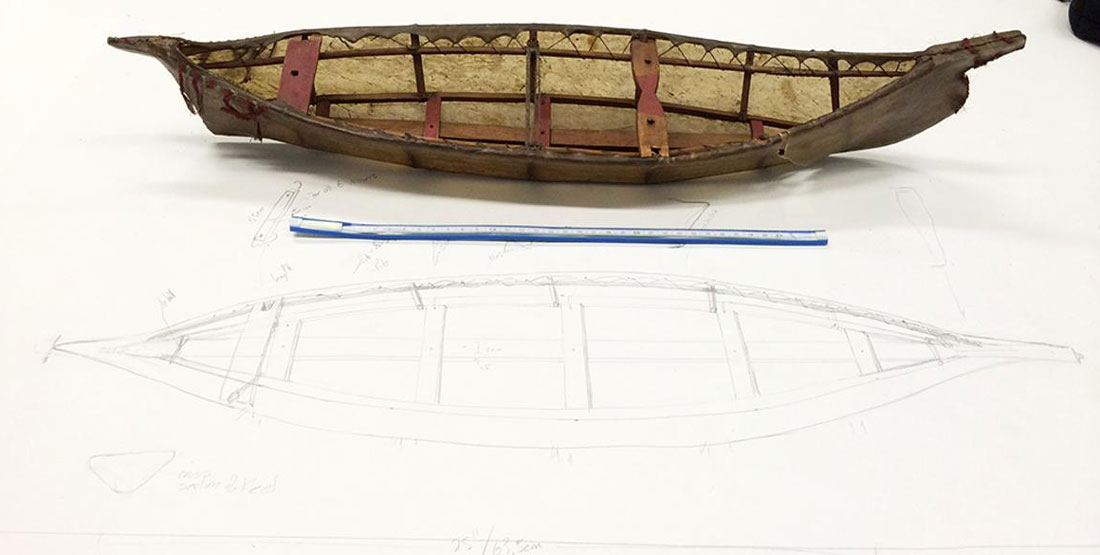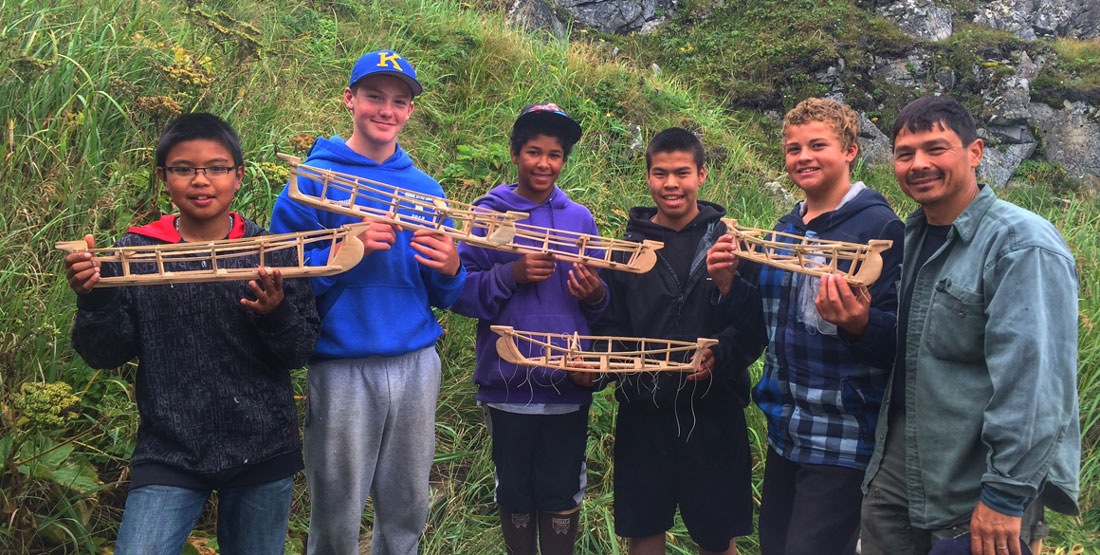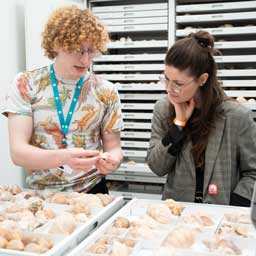Angyaat were said to be over 25 feet long and hold up to 70 people. These boats disappeared by the late 1800s and the only surviving examples are 12 models scattered across the world—one is in the Burke Museum’s collection. It is amazing to read and learn about these boats from historical accounts; the earliest artistic rendering of these boats can found in Webber’s drawings from Captain Cook’s voyages of 1778.
Today, local knowledge of these open boats is lacking. They disappeared from living knowledge. What happened and why did they disappear? We may never understand why, but learning what happened to them is another story that is unfolding in the rediscovery and building of this vessel once again on Kodiak Island.
This past summer, I worked with the community of Akhiok during their Petroglyph/Kids Camp in Cape Alitak, Alaska, to teach how the boat was constructed in the past. Using drawings and photographs of the model from the Burke collection as an example, I was able to create 14 kits for the students to use to make their own boat.
Together, we built the models during the weeklong camp. “No glue, no nails, only ties,” as Alfred Nauonoff teaches. After nearly a century of silence, it was an honor to be able to not just show, but also teach, youth and adults how to build a traditional model Angyaat once again on Kodiak.



